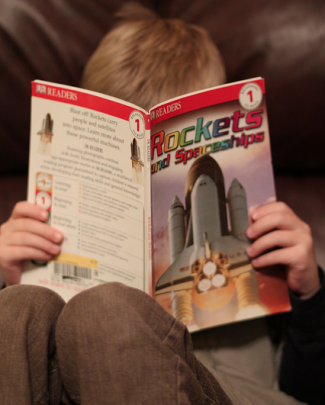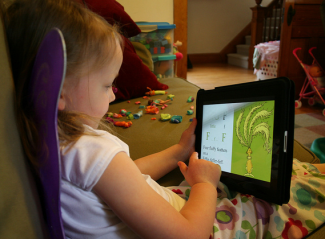Bastion
LQ: 9.15
Recommended Age: 10+
Skills Used: Planning, Working Memory, Mathematics, Reading
 Learning to read can be one of the biggest challenges that children face during the course of their education. The human brain is wired for speech but not for the written word; reading must be actively taught rather than, as people learn to speak a language, passively acquired.
Learning to read can be one of the biggest challenges that children face during the course of their education. The human brain is wired for speech but not for the written word; reading must be actively taught rather than, as people learn to speak a language, passively acquired.

Phonics is defined as the relationship between written letters and spoken sounds. For example, children with good phonics skills will understand that the letter “d” makes a “duh” sound, that the “s” makes an “sss” sound, and so on.
Phonological awareness is the ability to hear and manipulate the sounds in a spoken language. This means that a child is able to listen to a word and pick out the specific units of sound in it, which we call phonemes. Phonological awareness allows children to understand rhyming words, substitute one sound for another, combine sounds, and take away individual sounds from a word.
Children who struggle with phonics and phonological awareness have difficulty reliably pronouncing and recognizing written words, reading them correctly one day and mispronouncing them the next. They tend to guess at words, often based upon the first letter or two, rather than the whole word. They also have difficulty reading words with rhyming patterns or sounding out new words they have not seen before.
Working Memory: Allows a child to keep letter sounds (phonemes) in mind while forming a word and to remember the shapes of letters and words.
Focus: Helps with sustaining attention while sounding out new words and being persistent in practicing decoding skills.
Reading fluency refers to the ability to read accurately, effortlessly, and with appropriate flow and expression. The most common reasons for difficulty with reading fluency are difficulty with decoding skills, a lack of practice, and the inability to make reading an automatic process. Children who struggle with reading fluency often display poor comprehension skills, as they need to put so much of their cognitive resources into reading the words, that they have little left to attach meaning to the words they have read.
Working Memory: Assists in being able to easily and fluently recall visual representations of words (sight words).
Focus: Gives the capacity to sustain attention and effort when the flow of reading is interrupted.
Time Management: Allows a child to read words at an adequate pace for comprehension and meaning.
 Vocabulary refers not only to understanding the meaning of words, but also being able to use them effectively in spoken and written language. Having an excellent vocabulary facilitates an understanding of more complex material and may also serve to help readers recognize a word they may initially have difficulty decoding.
Vocabulary refers not only to understanding the meaning of words, but also being able to use them effectively in spoken and written language. Having an excellent vocabulary facilitates an understanding of more complex material and may also serve to help readers recognize a word they may initially have difficulty decoding.
Children who struggle with vocabulary tend to have difficulty in comprehending what they have read. They may also struggle to follow verbal directions when they do not understand a particular word or phrase.
Working Memory: Helps a child to recall the meaning of a word she learned in the past and to use it in the context of a written or spoken sentence.
Flexibility: Helps a child to know when and how to use synonyms or other words that
may better articulate what she is trying to communicate.
 Reading comprehension is described as an active process that engages the reader to construct meaning from text. Comprehension is generally improved when readers can relate what they have read to their knowledge and experiences and build “mental representations in memory.” Basic reading skills, phonological awareness, phonics, reading fluency, and vocabulary, are necessary prerequisites for reading comprehension.
Reading comprehension is described as an active process that engages the reader to construct meaning from text. Comprehension is generally improved when readers can relate what they have read to their knowledge and experiences and build “mental representations in memory.” Basic reading skills, phonological awareness, phonics, reading fluency, and vocabulary, are necessary prerequisites for reading comprehension.
Children who struggle with reading comprehension may have difficulty identifying relevant information. They may be able to explain what has happened in a book but are unable to describe the characters, motivation, or causes of activities. They may also struggle to verbally summarize what they have read.
 In addition to educational games and apps that are specifically designed to teach phonics, phonological-awareness, fluency, vocabulary, and comprehension skills, there are many other games and technologies that can serve to practice these skills while having fun. These include:
In addition to educational games and apps that are specifically designed to teach phonics, phonological-awareness, fluency, vocabulary, and comprehension skills, there are many other games and technologies that can serve to practice these skills while having fun. These include:
All membership plans come with full access to our entire suite of tools learning guides, and resources. Here are a few of the ones we think you’ll like the most: